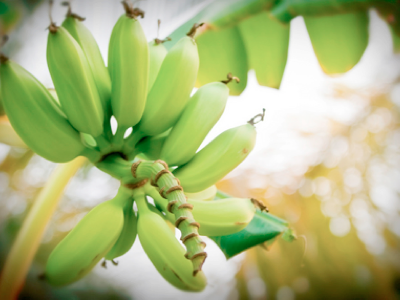Fauna & Flora

Ecology and Wildlife, Puerto Vallarta
In the states of Jalisco and Nayarit Mexico, the Sierra Madre Occidental is an important habitat that provides shelter to a wide variety of tropical and temperate flora and fauna, including some 300 species of orchids, 400 Bird species, a diversity of Mammals and other forms of wildlife, including Reptiles and an incredible number of colorful butterflies.
Abundant sun and summer rains nurture the vegetation of the Puerto Vallarta region. The flora is varied and abounds with Orchid and Bougainvillea, Chiltle, Brazil or the Dyewood, Tampicirán, Amapa and enormous Parotas that are still used to carve canoes from a single piece of wood by the native people of the towns of Mismaloya, Quimixto and Yelapa. There are also Cedar, Walnut, Primavera and other trees whose wood is used for the manufacture of furniture.
Puerto Vallarta is a paradise for bird lovers, with more than 400 species of migratory birds and marine fowl, such as Tropical Kingbird, Great Kiskadee, Hooded Oriole, Amazon Parrots and the so-called Bobo, or Blue-footed Booby Bird. They displayed a beautiful array of colors, from bright yellow to deep purple, from deep blue to shocking green.
The Sierra Madre Occidental region also supports some of the richest biodiversity found anywhere in North America, boasting a wide range of wildlife species including white-tailed deer, jaguar, pumas, wild boars, ocelots, jaguarundi, coati mundi, skunks, badgers, coyotes, margays, rabbits, armadillos and iguanas.
Now and then visitors may stop, attracted by something remarkable, such as a riot of flowers blooming from apparently dead branches or an Iguana soaking up the sun, but more often, travelers pass by the long stretches of thickets, jungles, and marshes without stopping. However, a little knowledge can blossom into recognition and discovery, transforming the ordinary into the extraordinary.
Mammals
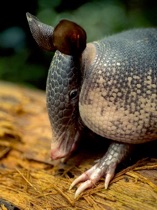
The Nine-banded Armadillo is a cat-sized, armored, insect-eating mammal. Similar in form to an anteater, the bony, scaled shell of the armadillo protects it from attacks by predators. A prolific digger, armadillos dig many burrows, as well as dig for food. Distribution is often determined by soil conditions, since the animal will not survive in areas where the soil is too hard to dig. Many other wildlife species use and benefit from these abandoned burrows.

About 24 in long, Badgers are nocturnal, solitary animals with squat, broad bodies and forelegs armed with long claws, which are highly efficient digging tools. The badger lives in deep burrows that it digs in hillsides and they spend most of the daytime asleep underground. Badgers are omnivorous feeding on fruits, roots, beech nuts, eggs, young birds, small quadrupeds, frogs, snails, worms, and insects.

One of the most mischievous members of the raccoon family is the Coati Mundi. This creature lives in Mexico, Central America and Paraguay. Generally reddish brown in color, with a long brown or black ringed tail and an extraordinarily long and slender nose, Coatis spend their nights in trees and ascend at dusk, usually traveling through the jungles in search of food. Coati Mundi eat fruits, young birds, eggs, lizards and insects.
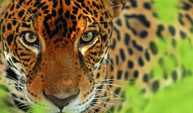
The jaguar is one of the most majestic and mysterious animals in nature. The jaguar has a compact body, a broad head and powerful jaws. It is the largest cat in the Americas, found mainly in Central and South America, but some continue to survive in Mexico. Only an estimated 15,000 jaguars remain in the wild. Although they prefer thick forest or swamps with good cover and water access, jaguars have been known to hunt in arid, open areas.
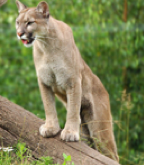
The Jaguarundi (Herpailurus yaguarondi) is a medium-sized Central and South American wild cat. It has short legs and an appearance somewhat like an otter; the ears are short and rounded. The fur is a uniform chestnut brown, but can range from grey to dark brown. Their coats have no markings except for spots at birth. These cats are more closely related to puma and jaguar than smaller species of cats as evident by their similar genetic structure and chromosome count.

The Margay, also known as the Long Tailed Spotted Cat, is similar in appearance to the Ocelot - its body however is smaller, growing up two 25-27 inches and in comparison with the Ocelot, the margay displays longer legs and tail. The cats markings are similar to that of the ocelot and its smaller relative the tiger cat or oncilla - having dark ringed rosette markings on a tawny to yellow/buff background.
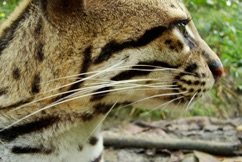
Only about twice as long as a house cat, the ocelot is an amazing climber, spending most of its time high in the trees. When it comes time to hunt, though, the ocelot sticks to the ground in the dark of night, and chases its dinner down with speed and agility. Excellent hearing and vision help the ocelot to catch its prey of small mammals, lizards, snakes and birds.
The W
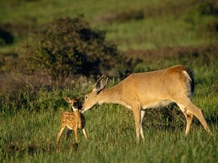
.
Reptiles
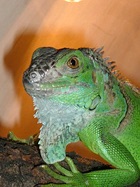
These animals are mainly arboreal and can be found in large trees with dense canopies, especially in humid areas. They seem to prefer branches near or overhanging water, so if threatened, may leap to the ground or dive into water, escaping danger. Their diet consists of fruit, vegetables, and some flowers. When young, iguanas will also eat insects. Adults can reach lengths of 4-6 feet, including the tail, and weigh as much as 30 pounds.

In the wild, Spiny-tailed iguanas are found in Mexico to Central America. They are predominantly black but the dorsal surface may show black bands on a grayish background and they can reach a length of 24-36 inches (61-91.4 cm.) The Spiny-tailed iguanas habitat is lower branches of large trees, rocks, stone walls, and along borders of forests. Their diet consists of insects, spiders, lizards, rodents, fruits and leaves.
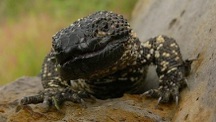
Mexican Beaded Lizards are large, venomous lizards that originate in Mexico and Guatemala. A close relative of the gila monster (Heloderma suspectum,) they possess venom glands in their lower jaws. The venom is delivered by capillary action along grooved teeth, so in essence, they chew the venom into their prey. The white and yellow stripes and spots on its black bumpy skin give this lizard a beaded appearance and its name.
Birds
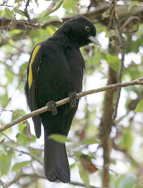
Native to Mexico, Yellow-winged Cacique are beautiful and very abundant blackbirds that live on the edge of the jungle in solitary nests or in small colonies in Jalisco, Nayarit, Guerrero, Michoacán, Oaxaca, Sinaloa and Sonora. Named for the bright yellow feathers that adorn their brilliant black bodies, Yellow-winged Cacique build bag-like nests that are up to 30 inches long, which can be seen in the middle or the upper parts of the trees
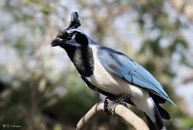
The Black-Throated Magpie Jay (Calocitta colliei) with its long tail and raucous cry is a conspicuous bird in tropical deciduous forests of the Sierra Madre. This beautiful bird has a large blue body with a black throat, a white chest and a long blue tail with white tips. The Magpie Jay will place its nest usually in a thorny tree at heights up to 100 feet, giving them extra protection from predators during the long nesting season from November to July.
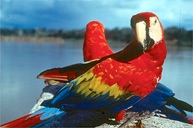
There are two species of Amazon parrots in the Banderas Bay region. The white-fronted parrot (Amazona albifrons) is a small species that is locally very common in coastal thorn scrub and open tropical deciduous forest. The larger lilac-crowned parrot (Amazona finschi) is less common but more commonly seen in tropical deciduous forest. Amazon Parrots are quiet and inconspicuous when feeding or resting in trees; noisy and raucous during flight.
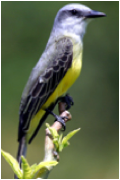
A very common bird (length 20 cm) with a grey head, white throat, brown wings, a yellow belly and a powerful bill. It has a orange spot on its head but that is mostly unobservable. This flycatcher is found in open country with trees, where you see it sitting without moving (often in palms) to fly up to catch insects in a typical flycatcher way. It is as aggressive against intruders like the great kiskadee and will chase after big birds like the yellow-headed caracara.
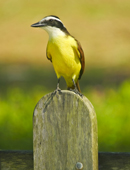
A member of the flycatcher family, the Great Kiskadee is about ten inches in length with black and white stripes on the crown and sides of its head and white line above its eyes, a white throat and bright yellow chest. Great Kiskadees eat insects like beetles, wasps, grasshoppers, bees and moths. Despite the fact that they are flycatchers, they also eat berries, seeds, mice, frogs, fish and lizards and will dive straight into the water to catch fish.

The Blue Footed Booby is a tropical seabird that lives on the west coast of Mexico and along the coast of Ecuador and northern Peru. Just like its name suggests, the Blue-footed Booby bird has bright blue feet and is about the size of a goose. Its name comes from the Spanish word bobo which means "stupid fellow," because Blue Footed Boobies are very tame birds, lacking the fear instinct of other birds. They also appear to be a very clumsy bird on land.
Sunday, May 27, 2012
